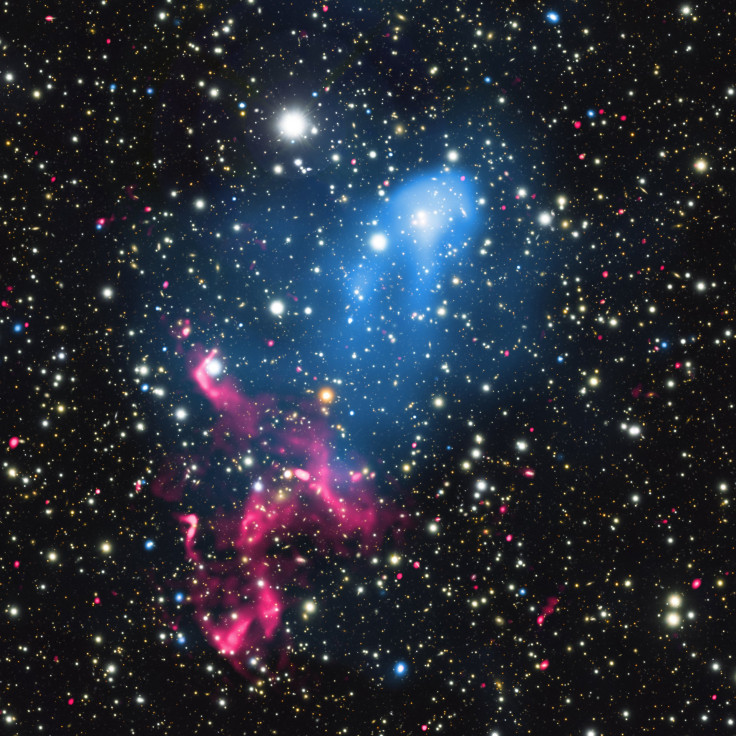NASA Shares ‘Galactic Pumpkin’ Photo Captured By Hubble For Halloween
KEY POINTS
- Hubble shared an image of two galaxies forming what astronomers dubbed the "Greater Pumpkin"
- The image is a result of a collision between two galaxies, the NGC 2292 and NGC 2293
- The galaxy pair is located 120 million light-years away from the Milky Way galaxy
The NASA/ESA Hubble Space Telescope has discovered a "galactic pumpkin" just in time for this year's Halloween. The Hubble captured an image of a pair of galaxies that looks like a Halloween decoration in space as they are in the early stages of a collision.
Described as the "Greater Pumpkin" by astronomers, the photo NASA shared on its Twitter and website shows what appears to be two eyes and a crooked smile inside a pumpkin-shaped head. The object emits a bright orange color, while the sector surrounding the "smile" is bluish.
The so-called "Greater Pumpkin" consists of two galaxies, identified as NGC 2292 and NGC 2293, that together span 109,000 light-years in diameter.
The orange color emitting from the two galaxies is due to aging red stars, while the bluish hue of its smile is due to newborn star clusters scattered along a newly forming dusty arm. The "eyes" of the pumpkin, meanwhile, are actually concentrations of stars around a pair of supermassive black holes.
Check out the image of Hubble's "galactic pumpkin" below.
🎃 A galactic pumpkin nearly 109,000 light-years wide...
— NASA (@NASA) October 30, 2020
Our @NASAHubble telescope captured colliding galaxies glowing with the color of aging red stars. The "eyes" are concentrations of stars around a pair of supermassive black holes: https://t.co/NS3okRs1Ar #NASAHalloween pic.twitter.com/HO6IaC6MxH
Explaining the collision, Hubble astronomers said on the NASA website that galaxies lose their flattened spiral disks when they crash into one another, and their stars are gathered into a football-shaped volume of space, resulting in an elliptical galaxy.
However, astronomers said NGC 2292 and NGC 2293 may be on their way to merging into a rare giant spiral galaxy. Although it still depends on the trajectory of the pair's collision, this scenario has only a handful of other examples, making it undoubtedly rare.
"The ghostly arm making the 'smile' may be just the beginning of the process of rebuilding a spiral galaxy," Hubble astronomers said. "The arm embraces both galaxies. It most likely formed when interstellar gas was compressed as the two galaxies began to merge. The higher density precipitates new star formation."
Astronomer William Keel, of the University of Alabama in Tuscaloosa, also predicted that the pair of galaxies will eventually combine to form a giant luminous spiral galaxy like UGC 2885, Rubin's Galaxy, which is over twice the diameter of the Milky Way galaxy.
NGC 2292 and NGC 2293 are located about 120 million light-years away from the Milky Way in the constellation Canis Major.

© Copyright IBTimes 2025. All rights reserved.





















